Photo

Cuttlefish larvae
Cuttlefish are marine cephalopods, closely related to octopuses and squids. They are intelligent and carnivorous feeding on crabs, fish, and worms. The image above is a baby cuttlefish that has hatched from an egg.
Photo credit
https://fineartamerica.com/featured/cuttlefish-newman--flowers.html
#cuttlefish#cephalopods#invertabrates#fun facts#marine science#ocean#deep ocean#plankton#larvae#education#Knowledge is power
71 notes
·
View notes
Photo
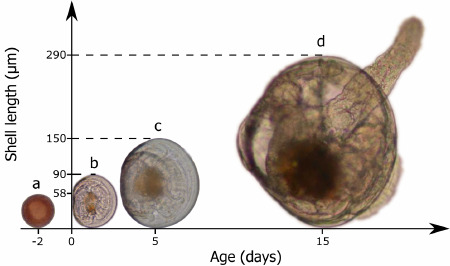
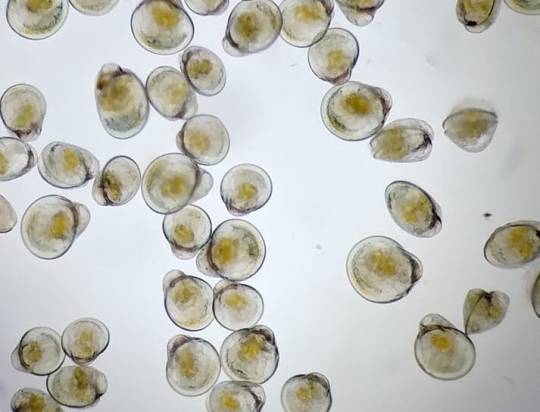
Hard Clam
Mercenaria mercenaria
The Hard Clam is important to the ocean ecosystem because it filters water and delicious to eat. However, clams do not start off moving in the sand. They actually float in the ocean as zooplankton and eventually grow into the adult clam. The life cycle starts with adult clams releasing sperm and eggs into the ocean. The eggs are fertilized and grow into veligers. The veligers have tiny hair-like cilia that helps them move around and catch phytoplankton. After a few days, the veliger grows a foot and a buccal siphon, which is used to filter the water. Then, they eventually grow into adult clams after 2 to 3 years. Furthermore, clams can be produced in aquaculture, where they grow in an artificial environment.
#hard clam#clam babies#veliger#zooplankton#Knowledge is power#knowledge#fun facts#aquaculture#ocean life#oceanlife#oceanlover#ocean#sea#sea life#ocean animals#mother nature#planet earth#the blue planet#plankton#cool#education#science#marine biology#marine science#marine animals
67 notes
·
View notes
Photo
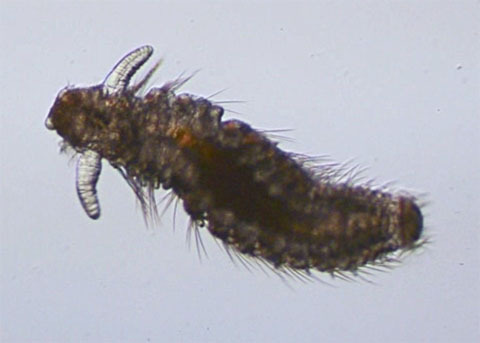
Polychaete worm larvae
Species: unknown
Polychaetes or bristle worms are marine worms that can be found in a variety of ocean habitats, such as marsh, ocean sand, algae covered rocks, or their own self made tubes. There are 10,000 species of bristle worms that have been identified, but there are many others yet to be discovered. Baby bristle worms are called larvae, and they float in the ocean for the first part of their life.
Photo credit: http://nathistoc.bio.uci.edu/Annelids/Larva%20A3/index.htm
https://www.sciencedirect.com/topics/biochemistry-genetics-and-molecular-biology/polychaeta
#polychaete#marine worm#bristle worms#ocean#ocean life#zooplankton#marine#marine biology#marine animals#marine life#not mine#fun facts#education#mother nature#nature#the blue planet#planet earth
121 notes
·
View notes
Photo
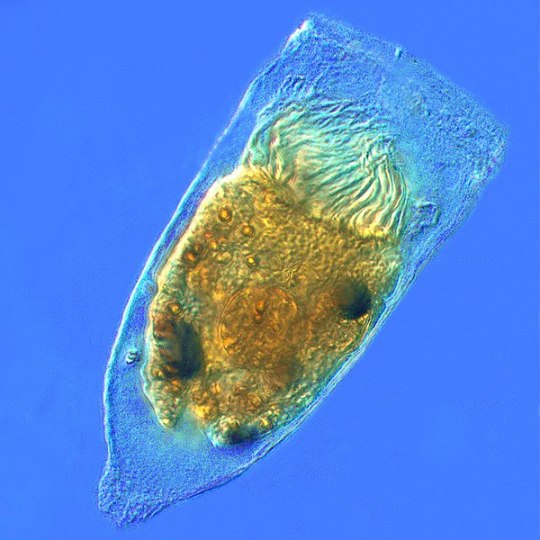
Tintinnid ciliate
Tintinnid ciliates are tiny plankton that use ciliate or wispy hairs to move in the ocean. They also are protected by vase shaped shells called lorica. Scientist believe the lorcia is made of sand and minerals due to its transparency.
Photo credit: https://sites.evergreen.edu/vms-spring/tintinnid-ciliate/
https://commons.wikimedia.org/wiki/File:Tintinnid_ciliate_Favella.jpg
#tintinnid ciliate#plankton#planet earth#nature#zooplankton#ocean#ocean life#sealife#sealover#Knowledge is power#knowledge#fun facts#not mine
76 notes
·
View notes
Photo
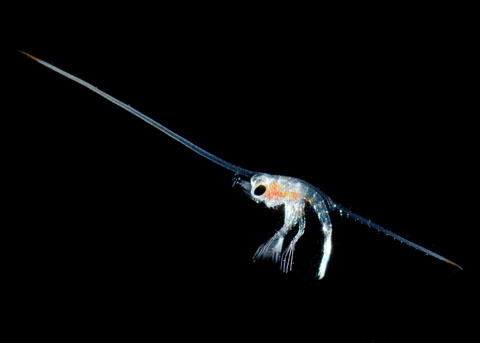
Porcelain Crab
Porcellanidae
Zoea Larva
The tiny and delicate animal above is a baby porcelain crab in the zoea stage. Crabs go through several stages of growth, and they are temporarily platonic. The crab’s long spine is called a carapace and is used for floating in the water.
Photo credit: http://nathistoc.bio.uci.edu/crustacea/Larvae/Larva1.htm
#plankton#planet earth#zooplankton#zoea#crab larvae#porcelain crab#ocean life#oceanlover#ocean animals#marine life#marine biology#education#marine animals#marine science#science#ocean#sea#sealife
105 notes
·
View notes
Photo
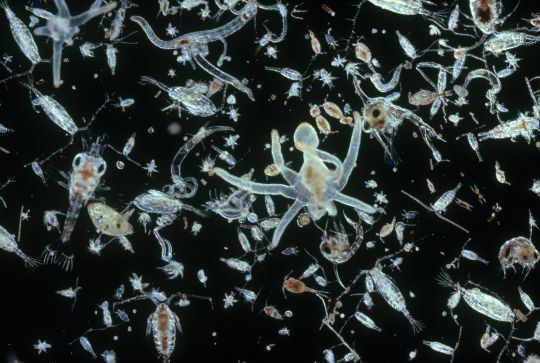
Plankton
Plankton are organisms that float in the ocean that can not swim vertically. They can be as small as a speck of dirt or the size of a sunfish. When you you swim in the ocean, you are surrounded by plankton. They are vital to our planet and ocean ecosystem. Plankton are also responsible for 80% of the world’s oxygen! The picture above shows a variety of plankton that can be found in a single drop of water.
Photo credit: https://www.nationalgeographic.org/encyclopedia/plankton/
#planet earth#zooplankton#the blue planet#phytoplankton#microscopic#ocean life#oceanlover#oceanlife#marine life#marine biology#marine science#marine#science#knowledge#fun facts#not mine#Knowledge is power
201 notes
·
View notes
Photo
A cool deep sea plankton!

Pram Bug
Phronima sedentaria
The Pram Bug is a deep sea amphipod that is located between 200 to 1000m in the ocean. They have a translucent exoskeleton and can see primarily blue light. It is also is contained in a hollowed out barrel that is used for protection and to house babies. The image above is a female pram bug carrying its young.
Photo Credit:https://ocean.si.edu/ocean-life/invertebrates/phronima-female-and-young
406 notes
·
View notes
Photo
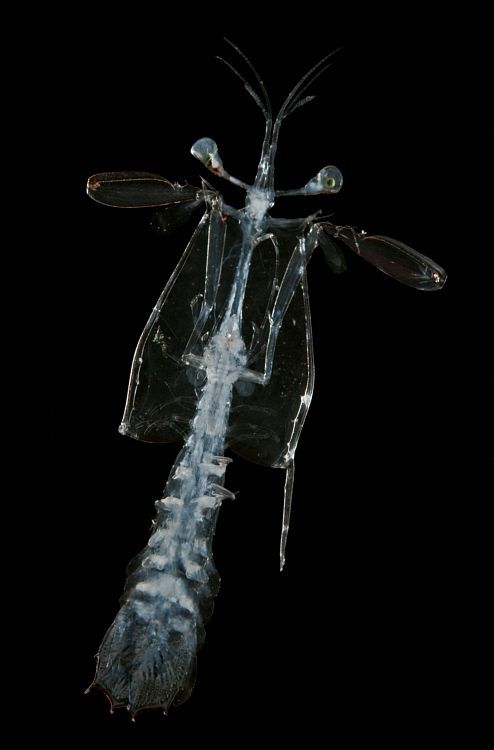
Mantis Shrimp Larvae
Odontodactylus scyllarus
Adult Mantis Shrimp are aggressive predators that live tropical parts of the ocean. However, when they are babies, they are docile, microscopic creatures that float in the ocean. They larvae are at first translucent and then molt into the rainbow-colored adult.
Photo-credit: https://www.pinterest.com/pin/383298618256901097/
#mantis shrimp#larvae#plankton#zooplankton#ocean life#oceanlife#oceanlover#ocean#sealife#sea life#sealover#sea#microscopic#crustaceans#shrimp#fun facts#not mine#planet earth#the blue planet#nature
190 notes
·
View notes
Photo


Bloody-belly comb jelly
Lampocteis cruentiventer
The Bloody-belly is a 16 cm ctenophore that is found at depths 700 m to 1200m. It is crimson red in color and appears black in the deep ocean. However, the jelly has the ability to emit a different color. Furthermore, it uses highly iridescent ctenes to propel through the water.
Photo credit: https://laughingsquid.com/bloody-belly-comb-jelly/
https://www.reddit.com/r/deepseacreatures/comments/2j1717/bloodbelly_comb_jelly_lampocteis_cruentiventer/
#bloody-belly comb jelly#comb jelly#ctenophore#marine biology#marine animals#marine life#marine science#marine#education#invertebrates#ocean life#deep ocean#oceanlife#oceanlover#ocean ecosystem#ocean#science#fun facts#Knowledge is power#knowledge#mesopelagic#ctenes#Aesthetic#red#crimson#cute#jelly#not mine#planet earth#plankton
554 notes
·
View notes
Photo


Pyrodinium bahamense
Pyrodinium bahamense is a tropical species of dinoflagellates that is found primarily in Atlantic Ocean waters. It prefers salinity around 20 psu and blooms when there are large amounts of nitrogen in the water. The dinoflagellate glows bright blue when agitated by motion. Furthermore, even though this plankton species is beautiful to look at, it causes seafood toxicity.
Photo credit: https://alchetron.com/Pyrodinium-bahamense
https://wonderchews.com/bodies-of-light/
1K notes
·
View notes
Photo
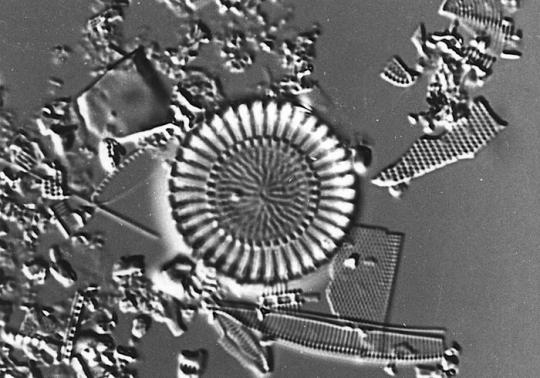
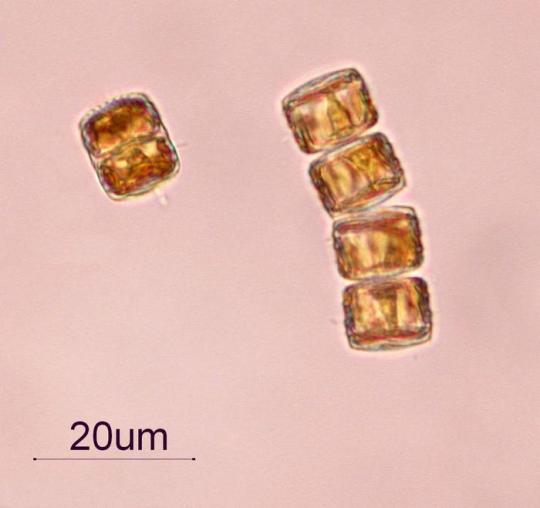
Cyclotella meneghiniana
Cyclotella is a disk shaped diatom that is amber in color. It has marginal spines that are used to stay suspended in the water column. Furthermore, this phytoplankton is common in shallow nutrient rich water.
Photo credit: https://diatoms.org/species/cyclotella_meneghiniana
http://nordicmicroalgae.org/taxon/Cyclotella%20meneghiniana?media_id=Cyclotella%20meneghiniana_1.jpg
#plankton#phytoplankton#diatoms#science#marine#marine life#marine biology#marine science#ocean#ocean life#oceanlife#ocean ecosystem#planet earth#the blue planet#education#knowledge#Knowledge is power#fun facts#cyclotella#not mine
25 notes
·
View notes
Photo
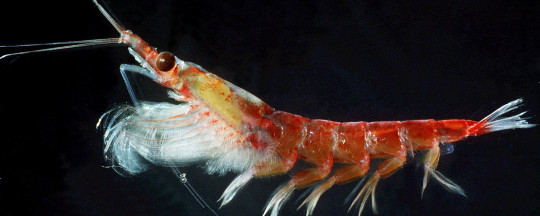

Antarctic Krill
Euphausia superba
Antarctic krill are tiny crustaceans characterized by a rigid exoskeleton that is translucent and covered in small red spots. They feed on phytoplankton and are a primary food source for many ocean species. Scientists have the ability to see its digestive glands and reproductive organs. Furthermore, Krill can produce 8000 eggs at a time. Protective mothers can carry their babies around until they are ready to hatch.
Photo credit:
https://theconversation.com/climate-change-threatens-antarctic-krill-and-the-sea-life-that-depends-on-it-138436
https://www.antarctica.gov.au/about-antarctica/animals/krill/
#antarctic krill#krill#zooplankton#ocean ecosystem#ocean#ocean life#oceanlife#oceanlover#sea#sealife#sea lover#fun facts#not mine#marine life#marine biology#marine animals#marine science#marine#the blue planet#nature#knowledge#Knowledge is power#science#crustaceans
127 notes
·
View notes
Photo
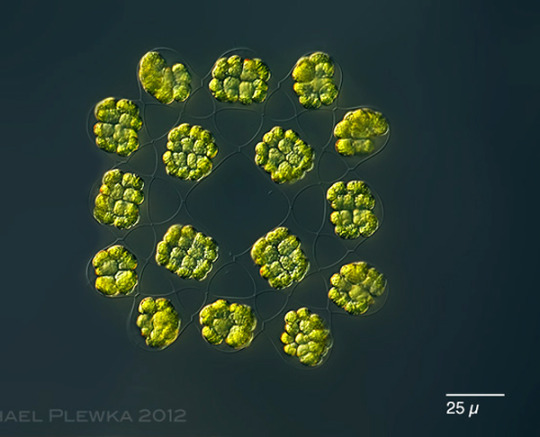

Gonium pectorale
Pronunciation: Go-nee-e- um peck- tor-ale
Gonium pectorale is a fresh water algae that is common in ponds, lakes, and rivers. It forms a colony of photosynthetic cells, and it can reproduce sexually and asexually. The long hairs seen on the colony are cilia, which are used to stay suspended in the water.
Photo credit
http://cfb.unh.edu/phycokey/Choices/Chlorophyceae/colonies/colonies_flagellated/GONIUM/Gonium_Image_page.html
https://en.wikipedia.org/wiki/Gonium
#green algae#algae#microscopic#plankton#phytoplankton#gonium#marine science#marine biology#marine life#marine#nature#the blue planet#aesthetic#planet earth#fresh water#not mine#knowlegde is power#knoweledge#science#biology#education#fun facts
22 notes
·
View notes
Photo

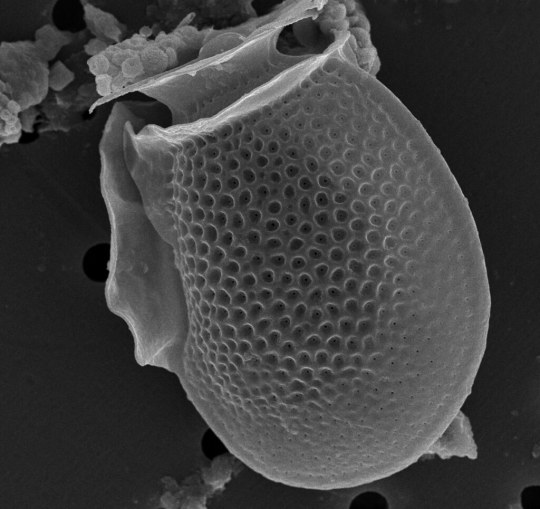
Dinophysis fortii
Pronunciation: Dino-fist-sis four- tee
Dinophysis fortii is a dinoflagellate that produces a powerful toxin that causes diarrheic shellfish poisoning in clams and oysters. It produces asexually using binary fission. Furthermore, the dinoflagellate is found in temperate coastal or ocean waters.
Photo credit: https://www.eoas.ubc.ca/research/phytoplankton/dinoflagellates/dinophysis/d_fortii.html
https://www.flickr.com/photos/myfwc/8622953610
#dinoflagellate#plankton#marine biology#biology#oceanlover#oceanlife#ocean#ocean ecosystem#marine life#marine science#marine#planet earth#the blue planet#aesthetic#education#knowlegde is power#knowledge#cool#sea#science#microscopic#fun facts#not mine
27 notes
·
View notes
Photo
Many ctenophores are not microscopic. However, they are classified as plankton because by definition they cannot move vertically in the water column. The Cigar Comb Jelly is a great example of a floating ctenophore.
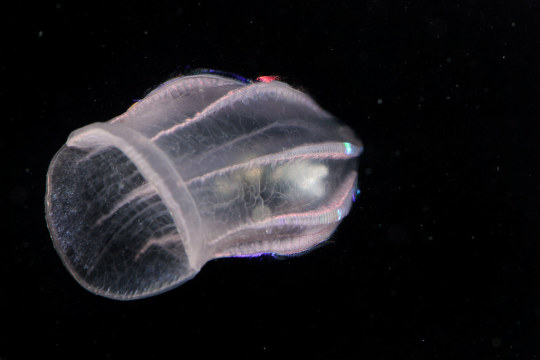

Cigar Comb Jelly
beroe forskalii
The Cigar Comb Jelly is a gelatinous ctenophore is marveled by many due to its sparkling bioluminescence. It tends to elegantly float around 120 m in the ocean. It uses unique, hair-like structures called ctens to move horizontally in the ocean. It also swims in a spiral pattern before consuming zooplankton in the ocean.
Photo credit: https://www.wrobelphoto.com/gelatinouszooplankton/h25347306
https://www.flickr.com/photos/a_migotto/27227530815
410 notes
·
View notes
Photo
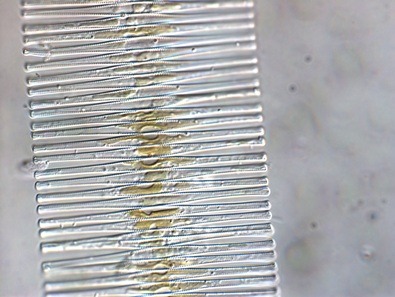
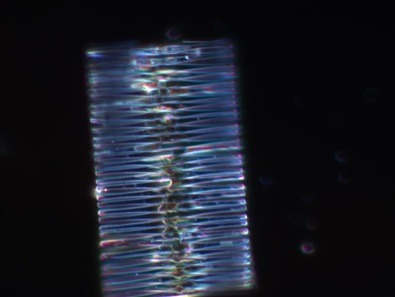
Fragilaria crotonensis
Pronunciation: Frah-ji-lare- riah crow-ton-nee-sis
Fragilaria crotonensis is a diatom that is joined together by cell frustules and forms ribbon like colonies. It tends to bloom during the spring time in fresh water lakes. The colonies also required high amounts of nutrients to survive and reproduce.
Photo credit: http://oceandatacenter.ucsc.edu/PhytoGallery/Freshwater/Fragilaria.html
#diatoms#diatom#fragilaria#plankton#phytoplankton#photosynthesis#autotrophs#marine biology#biology#fresh water#planet earth#marine life#marine science#aesthetic#not mine#knowlegde is power#knowledge#science#scientific#education#fun fact#the blue planet#weird#cool#odd
28 notes
·
View notes
Photo


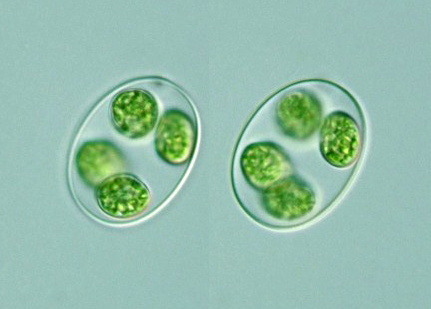
Oocystis sp.
Oocystis sp. are fresh-water green algae that form colonies in the surface of the water. Two to eight cells are suspended in a hyaline, mucilaginous envelope; the envelope is the clear bubble surrounding the green cells. Furthermore, it produces asexually and uses photosynthesis to create it own food.
Photo credit: http://protist.i.hosei.ac.jp/PDB/Images/Chlorophyta/Oocystis/sp_9c.html
http://protist.i.hosei.ac.jp/PDB/Images/Chlorophyta/Oocystis/sp_6c.html
http://cfb.unh.edu/phycokey/Choices/Chlorophyceae/colonies/colonies_not_flagellated/OOCYSTIS/Oocystis_Image_page.html
#oocystis#green algae#fresh water#plankton#photosynthesis#marine biology#biology#nature#planet earth#ecosystem#not mine#knowlegde is power#knowledge#science#marine science#education#weird#cool#the blue planet#aesthetic
16 notes
·
View notes